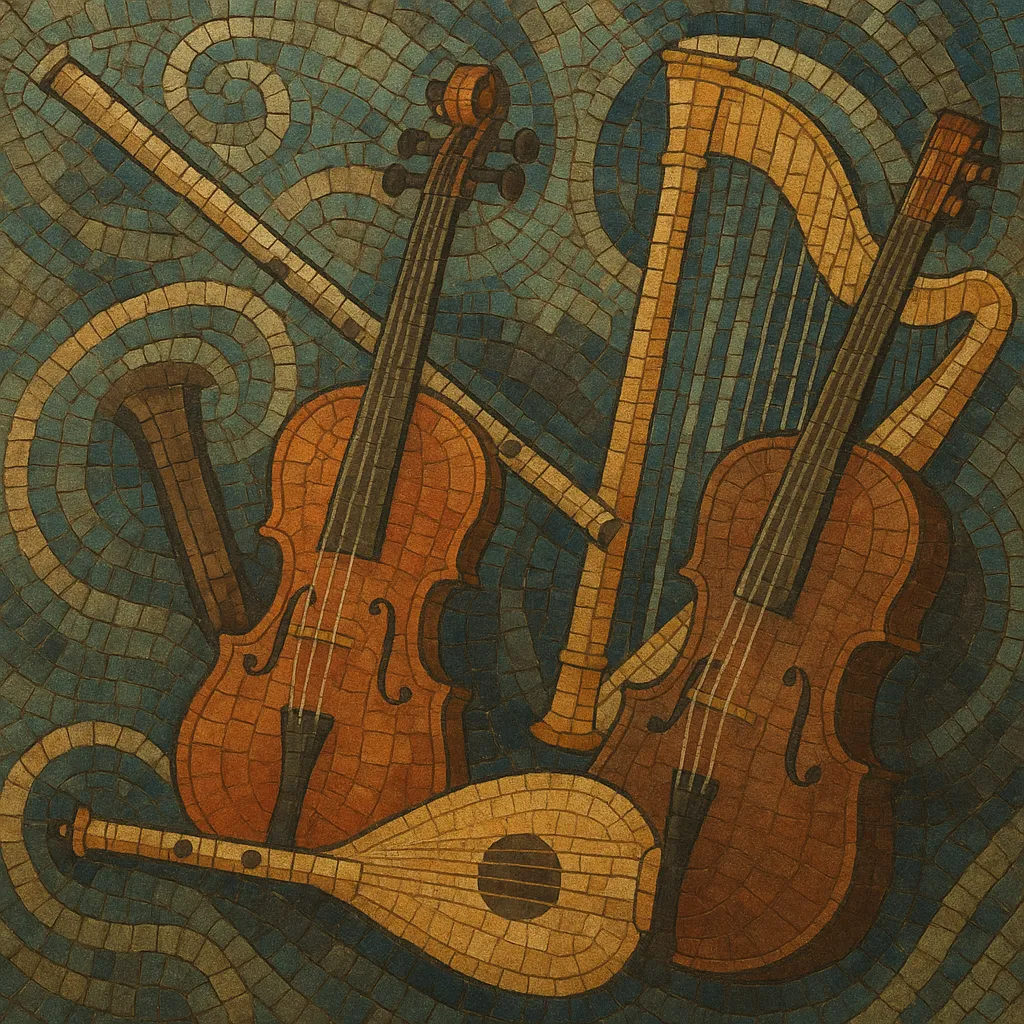Instrumental is music created and performed without sung lyrics, placing the expressive weight on melody, rhythm, harmony, and timbre produced by instruments.
As an umbrella practice it appears in many cultures, but its modern identity cohered in Baroque-era Europe when purely instrumental forms such as the sonata, concerto, and dance suites began to flourish. Since then, instrumental thinking—developing motives, structuring form without text, and showcasing timbral contrast—has informed everything from orchestral music and solo piano repertoire to post-rock, film scores, and beat-driven electronic styles.
Instrumental works can be intimate (solo or chamber) or expansive (full orchestra), narrative (programmatic) or abstract (absolute music). The absence of lyrics invites listeners to project imagery and emotion, making the style a natural fit for cinema, games, and contemplative listening.
Instrumental performance predates written history, and instrumental pieces existed in Medieval and Renaissance Europe as dances, interludes, and consort music. Notated traditions such as Medieval and Renaissance instrumental dances and ricercars helped establish idioms for specific instruments and ensembles.
In 17th‑century Italy, purely instrumental forms crystallized. Composers like Arcangelo Corelli and Antonio Vivaldi advanced the sonata and concerto, emphasizing tonal harmony, motivic development, and contrast between soloist and ensemble. Instrument building (violins, keyboards, woodwinds) and standardized tuning further enabled virtuosic instrumental writing.
The Classical period formalized instrumental architectures: symphony, string quartet, and sonata‑allegro form (Haydn, Mozart, Beethoven). The Romantic era broadened expressive range and virtuosity: Paganini for violin, Chopin and Liszt for piano, and richly orchestrated symphonic poems and concertos. Instrumental music became a vehicle for personal expression and coloristic orchestration.
New technologies (recording, film) and new idioms (impressionism, modernism, jazz, minimalism, electronic music) expanded instrumental palettes. Film composers (e.g., Morricone) used instrumental themes to tell stories without words; electronic instruments and studios enabled entirely new timbres, textures, and production-led forms.
Today, instrumental practice spans orchestral concerts, solo piano, post-rock crescendos, ambient soundscapes, and beat-centric production (instrumental hip hop, lo‑fi beats). The core ethos remains: shaping musical narrative with instruments alone, leveraging form, texture, dynamics, and timbre to communicate meaning without text.
Decide whether the piece is intimate (solo piano, guitar, or small chamber group) or expansive (full orchestra, large ensemble, or layered electronics). Choose instruments with complementary ranges and timbres so each line is audible and characterful.
Craft a clear, singable main theme. Develop it through sequences, inversion, augmentation/diminution, and varied orchestration. Use secondary motifs for contrast and to mark formal boundaries.
Plan a harmonic journey (functional tonality, modal frameworks, or static/ambient harmony). Common forms include binary/ternary, theme and variations, rondo, and sonata form. In cinematic or ambient contexts, prefer evolving harmonic fields and pedal points to emphasize texture over cadential closure.
Define a rhythmic identity: motoric ostinati for momentum, rubato for expressivity, or syncopated grooves if drawing from rock/hip hop idioms. Use rhythmic layering (e.g., polyrhythms, hemiolas) to add energy without lyrics.
Alternate textures—monophony (solo), homophony (melody + accompaniment), polyphony (counterpoint), and layered soundscapes. Orchestrate by register, color, and dynamic contour: introduce lines in contrasting instruments, double melodies at the octave or in thirds, and thin textures before climaxes for greater impact.
If working in a DAW, shape space with reverb and delay, automate dynamics, and use EQ to carve frequency lanes so lines remain transparent. For acoustic ensembles, notate articulations, bowings, and dynamics precisely; rehearse balance and blend. Without lyrics, pacing is crucial—refresh attention every 8–16 bars with variation in harmony, texture, register, or rhythm.


